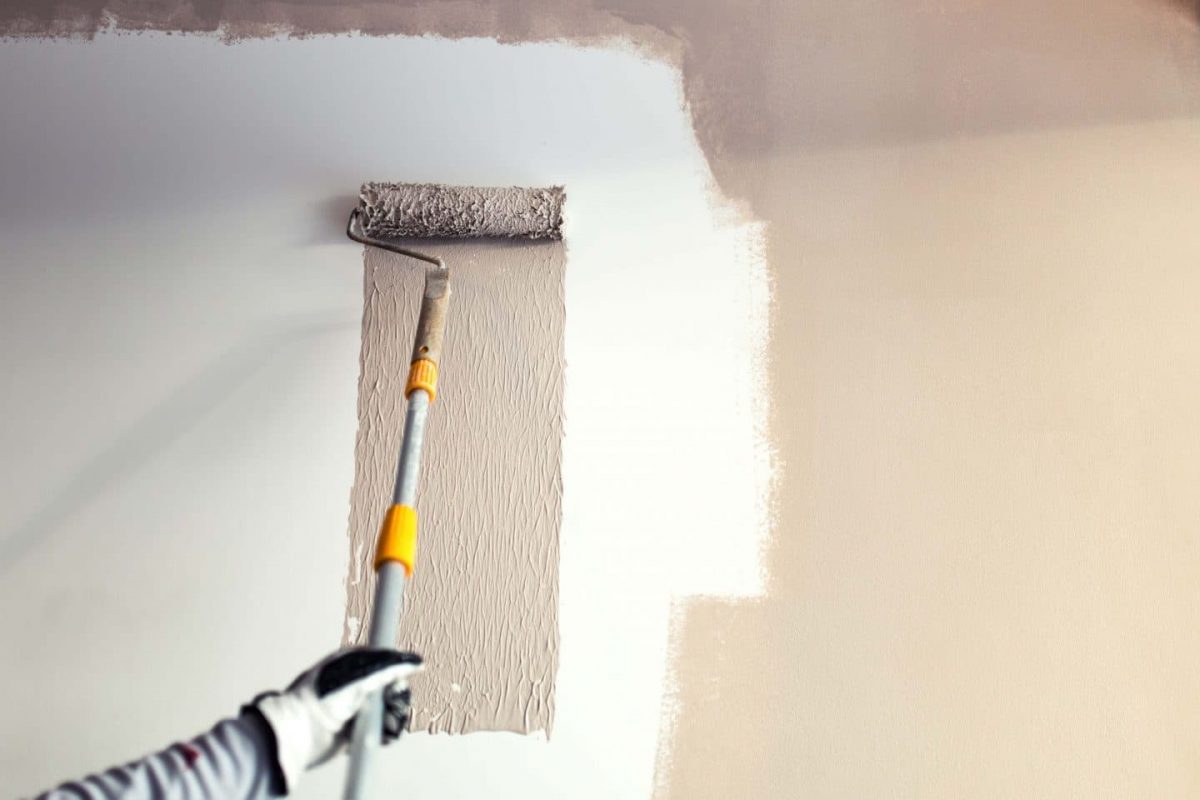We often hear from customers looking to paint their freshly plastered internal walls. To help our customers out, we have written this comprehensive list of the processes required to ensure your walls look perfect. Below we will discuss when and how to paint new plaster internally.
When To Paint New Plaster
Ideally, plaster needs to be fully dry prior to painting. Fresh plaster will take around 4-6 weeks to fully dry.
Fresh plaster is porous and will therefore absorb moisture. If you attempt to paint over plaster that is still damp the paint is likely to peel off. This is obviously not ideal! We really recommend holding yourself back and waiting before painting your new plaster.
Preparing Plaster To Paint: Sand Imperfections
For smaller areas of repair work, sand the walls down with 150 grit sandpaper. You are aiming to remove any rough areas to get the substrate as smooth as possible. Afterwards, use a very slightly damp cloth to remove any dust. Make sure the cloth isn’t too damp. The aim is not to re-wet the plaster.
Preparing Plaster To Paint: Seal The New Plaster
Before painting the new plaster you will require a sealer to prime the surface a lot like adding wax to a new piece of oak furniture for example. Contractors often worryingly think PVA will work as a sealer. Do not use PVA. PVA is the mortal enemy of paint!
There are two methods to sealing the new plaster. Firstly, you can use a mist coat of white watered down emulsion. However, it is more preferable to use a primer or top coat and water down the first layer by 10%. This allows the initial coat to properly soak into the plaster aiding adhesion of the final coat.
Promain’s Top Primer Paints For Plaster
- Rust-Oleum Pegafix Universal Impregnating Adhesion Primer – A general use adhesion primer
- Mapei Silexcolor Primer – For use on lime plaster within a Mapei system
- Mapei Silancolor Primer – For use on lime plaster within a Mapei system
- Teknos Timantti Stop Stain Blocking Primer – For plaster at risk of staining
- Mapei Malech Primer – For use within a Mapei System
Emulsion Topcoat Paints For Plaster
- Mapei Dursilite – For internal use. Available in over 30k colours via our in-house tinting system.
- Centrecoat Aqua Anti-Bacterial Hygiene – Suitable for areas that require a sanitary environment. Tintable to pastel shades.
- Mapei Silexcolor Mineral Silicate Masonry Paint – Recommended for the painting of porous vertical interior or exterior surfaces where protection against atmospheric agents is required.
- Mapei Silancolor Masonry Paint – A breathable, water repellent masonry paint coating.
- Keim Optil – A premium quality sol/silicate, mineral based paint designed especially for use in interior applications for an elegant finish. Suitable for use on walls and ceilings.
What Do I Do If I Have Painted My New Plaster Too Early?
Have you applied fresh paint to your new plaster before it has been allowed to dry? If this is the case, you will have more than likely noticed it has started to peel off. This is because the water within the plaster is still evaporating and has got “stuck” between the plaster and the layer of paint.
The bad news is that the only way to get around this is to remove the new paint. We recommend using a paint scraper for this.
You really need to thin the first coat prior to applying a neat coat of paint.
Introducing Owatrol ESP
As a backup plan, we would like to introduce Owatrol ESP.
Owatrol ESP, Easy Surface Prep is basically a bonding primer. ESP stops the laborious job of having to sand and key up a surface prior to painting. This bonding film promotes strong adhesion to new paint or on any non-porous surface.
Owatrol ESP‘s has a very simple, wipe on, wipe off application. All you need to do is give the surface a clean down first. Remove any loose or flaking debris, any flaking paint, and clean it down so you don’t have to sand the surface. Using a lint free cloth, wipe the Owatrol ESP over the surface. You can then overcoat, once dry, from around two hours onwards. Any type of solvent based or water based paint or varnish can be applied over the top of it. Owatrol ESP will help the bonding process and the adhesion process.
Easy on the hands and virtually odourless, ESP is a clean, effective and easy way to prepare any non-porous surface for painting, thereby saving on both time and labour.
Do you need any more advice in regards to painting on fresh plaster? Contact Promain‘s technical team today. For our full range of internal paints and emulsions, see our full category here:
https://www.promain.co.uk/interior-wall-and-ceiling-paint.html
Want to read more blogs? Try these:




